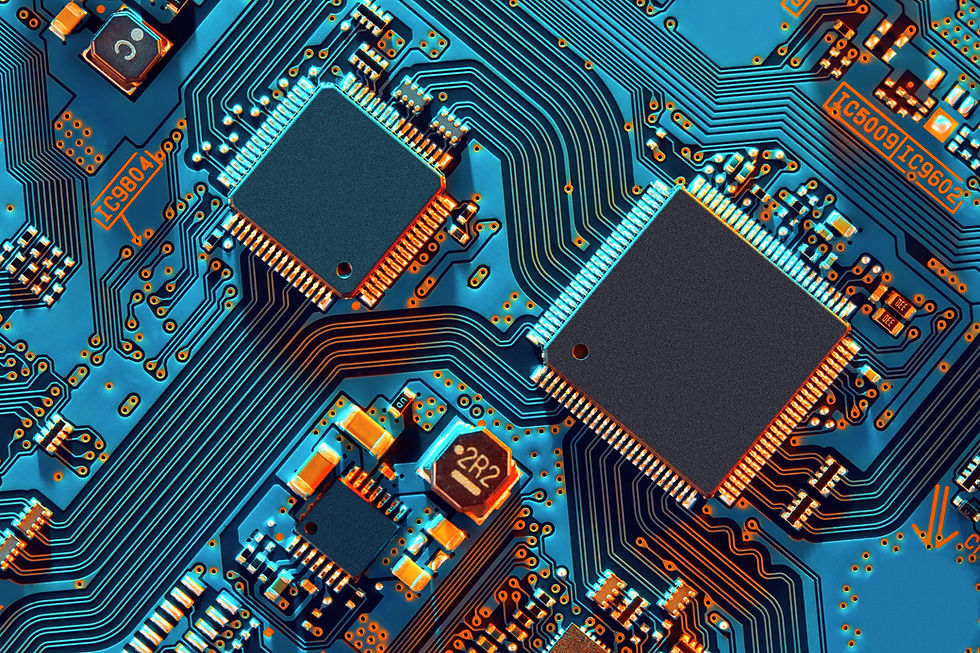Unifying IP Markets to Address Semiconductor Innovation Challenges
- Mark Meijer

- Jan 22
- 4 min read
Updated: Feb 7

At IPC Alliance, our mission has always been to create a functional, liquid exchange for IP capital—a marketplace where ideas, patents, and intellectual assets can be co-developed and collaborated upon, freely transacted, exchanged, and funded. Recognizing the persistent market inefficiencies and barriers to commercialization, we have chosen to focus on one of the most critical innovation sectors of our time: semiconductors.
However, while our platform is deeply engaged in solving the R&D and IP-based innovation challenges of the semiconductor industry, it remains a comprehensive system for unifying IP across all industries, breaking down barriers, and creating a frictionless IP (innovation) transaction ecosystem.
Why Focus on Semiconductors?
The semiconductor industry is the backbone of technological progress, underpinning advancements in artificial intelligence, quantum computing, telecommunications, autonomous systems, and more. Yet, the industry faces some of the most pressing innovation challenges, requiring massive investments in R&D, cross-industry collaboration, and new IP models.
R&D spending in semiconductors is among the highest of any industry, with leading companies investing 15-25% of annual revenue in research and development. In 2023 alone:
Intel invested $17.5 billion in R&D
TSMC spent $5.8 billion on R&D
Samsung Electronics allocated $19.6 billion toward semiconductor R&D
ASML spent €4 billion to advance lithography technology
Despite this massive R&D investment, the commercialization of semiconductor innovation remains slow, expensive, and fragmented. New materials, novel architectures, and evolving computing paradigms demand a broader approach to IP management—one that is global, seamless, and capable of integrating knowledge from multiple disciplines.
Key Innovation Challenges & IP Complexity in the Semiconductor Industry
The semiconductor industry is reaching fundamental physical and economic limits, requiring radical new solutions:
1. Materials Science & Beyond Silicon Innovation
Transition from silicon to Gallium Nitride (GaN), Silicon Carbide (SiC), and 2D materials (graphene, MoS₂, transition metal dichalcogenides).
The economic and technical challenge of scaling beyond 2nm process nodes means materials R&D must accelerate.
Quantum computing materials require entirely new patent frameworks and technology transfer models.
2. AI-Driven Semiconductor Design & Manufacturing
AI is transforming how chips are designed, optimizing process nodes and power efficiency.
New models for IP protection and licensing must be developed to handle AI-generated designs.
3. The Rise of Open-Standard Chiplets & Modular Architectures
The semiconductor industry is moving toward chiplet ecosystems, which will require a new approach to IP licensing, integration, and security.
Open-standard architectures (like UCIe for chiplets) raise challenges for IP protection and monetization.
4. Cross-Industry Collaboration is More Critical Than Ever
Next-gen semiconductor innovation requires expertise from multiple scientific fields, including physics, materials science, electrical engineering, and AI.
Industry-university collaboration models are outdated—many innovations remain locked in academic settings due to lack of funding, slow licensing processes, and legal barriers.
5. The Semiconductor Talent & STEM Workforce Crisis
The semiconductor industry faces a severe talent shortage, with estimates predicting a 1 million skilled worker shortfall by 2030.
The ability to commercialize IP quickly is essential to attracting STEM talent and funding their research efforts.
Unifying the Semiconductor IP Ecosystem
While individual semiconductor companies (TSMC, Intel, Cadence, Synopsys, Arm) have created IP collaboration portals, these platforms remain closed-loop systems. They only serve their specific ecosystems and do not provide:
A unified global IP exchange for semiconductor innovation
Cross-industry integration of semiconductor IP with AI, automotive, healthcare, and quantum computing
Automated IP scouting, valuation, and monetization tools
Funding mechanisms for university and startup semiconductor R&D
The IPC Alliance Platform
The IPCA Platform is a pioneering initiative designed to remove friction in the invention to innovation process by facilitating efficient, transparent, and data-driven commercialization of intellectual property (IP) assets. By aggregating patents, analyzing their technical readiness, market potential, and legal quality, and offering advanced analytical tools and transaction capabilities, IPCA aims to create a more dynamic and liquid environment for bringing innovations to market.
The platform serves as a centralized hub connecting universities, corporations, law firms, investors, startups, and other stakeholders, enabling them to navigate the complex landscape of IP valuation, licensing, development partnerships, and long-term strategic planning with unprecedented clarity and efficiency. The Alliance aims to create the necessary standards for patent liquidity that enables:
✅ Frictionless IP scouting for semiconductor and deep-tech patents
✅ Seamless industry-university collaboration for joint R&D
✅ Standardized AI-powered IP valuation to de-risk technology investments
✅ Funding for semiconductor startups based on IP-backed financing
✅ Integrated M&A and licensing transactions for semiconductor IP
By removing inefficiencies and creating a truly open global IP exchange, IPC Alliance ensures that semiconductor innovation is not bottlenecked by outdated IP structures, fragmented collaboration models, or high transaction friction.
Join the Future of IP & Semiconductor Innovation
The next decade will define the future of global technology leadership, and semiconductor innovation will be at its core. IPC Alliance invites researchers, corporations, startups, law firms and investors to be part of the world’s first truly unified IP exchange. Please contact us.
While semiconductors remain a primary focus, IPC Alliance is not limited to one industry. We aim to provide a universal framework for IP monetization, collaboration, and funding across all technology sectors—ensuring that scientific breakthroughs, regardless of their industry origin, can be rapidly commercialized and scaled.





Commentaires